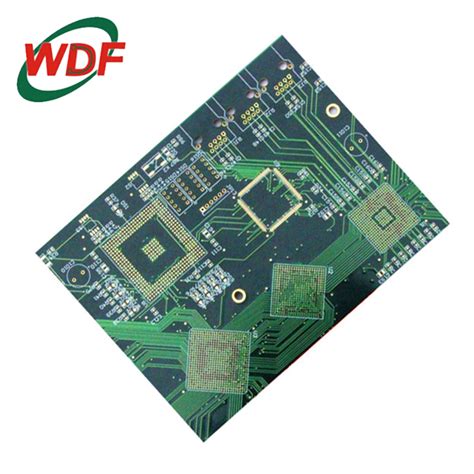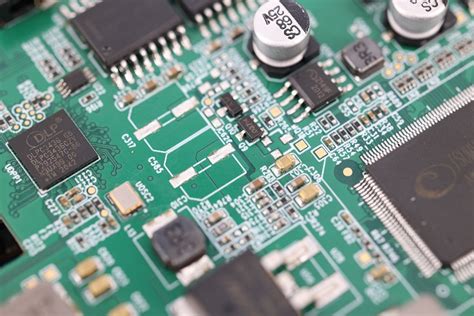Through-Hole PCB Assembly Services for Enhanced Reliability

Key Takeaways
When selecting PCB assembly methods for demanding applications, through-hole technology (THT) remains unmatched in delivering mechanical robustness and long-term reliability. Unlike surface-mount technology (SMT), THT components are secured with leads inserted into pre-drilled holes, creating durable connections ideal for environments exposed to vibration, extreme temperatures, or mechanical stress.
"Proper solder fillet formation is critical in through-hole PCBA to prevent joint fatigue. Automated optical inspection (AOI) systems are recommended to validate solder quality in high-reliability applications."
Key considerations for optimizing PCB assembly include:
| Factor | THT Advantage | Typical Applications |
|---|---|---|
| Mechanical Strength | Leads anchored through board layers | Industrial controls, robotics |
| Thermal Resilience | Enhanced heat dissipation via plated through-holes | Automotive systems |
| Vibration Resistance | Reduced risk of component detachment | Aerospace, military hardware |
For industries requiring automotive-grade reliability or industrial durability, through-hole PCBA provides a cost-effective solution when lifecycle longevity outweighs miniaturization needs. Best practices include using high-temperature solder alloys and conformal coatings to further protect against environmental stressors. Transitioning between SMT and THT requires balancing design complexity with performance demands—a decision best guided by PCB assembly specialists familiar with hybrid manufacturing techniques.

Through-Hole PCB Assembly for Harsh Environments
PCB assembly processes using through-hole technology (THT) remain indispensable for applications exposed to extreme conditions. Unlike surface-mount technology (SMT), through-hole components feature leads that penetrate the board, creating mechanically robust connections ideal for environments with high vibration, temperature fluctuations, or moisture. Industrial machinery, automotive control systems, and aerospace electronics often rely on PCBA solutions built with THT to ensure operational stability under stress.
Critical to this reliability is the precision of solder joints. Through-hole soldering forms fillet seals around component leads, reducing the risk of cracks caused by thermal cycling or mechanical shocks. For example, automotive-grade PCB assembly services often employ dual-wave soldering to achieve uniform coverage, even for components with large pin counts. This method enhances durability while maintaining electrical integrity—a key requirement for safety-critical systems.
When designing for harsh environments, engineers prioritize materials like high-temperature substrates and corrosion-resistant finishes. Partnering with a certified PCBA provider ensures adherence to industry standards such as IPC-A-610 for solder quality. While THT may increase production time compared to SMT, its superior mechanical anchoring makes it the optimal choice for applications where failure is not an option.
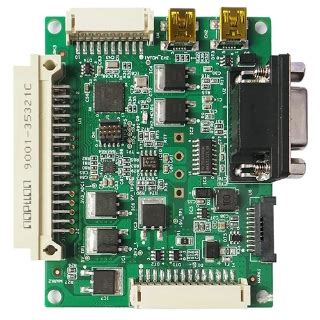
Precision Soldering Techniques in Industrial PCBs
At the core of high-reliability PCB assembly lies the mastery of precision soldering, particularly for industrial applications where environmental stressors demand flawless electrical connections. Unlike consumer-grade electronics, industrial PCBA processes prioritize solder joint integrity through methods like wave soldering and selective hand soldering. These techniques ensure consistent thermal distribution, minimizing voids or cold joints that could compromise performance in extreme temperatures or vibrations.
For example, wave soldering optimizes throughput while maintaining accuracy for through-hole components, with tightly controlled thermal profiles to prevent board warping. Meanwhile, hand soldering remains indispensable for complex geometries or mixed-technology boards, requiring IPC-A-610-certified technicians to achieve Class 3 standards. Advanced flux formulations further enhance wettability, reducing oxidation risks in humid or corrosive industrial settings.
To sustain durability, many manufacturers partner with specialized providers like Advanced Technology Assembly, leveraging their expertise in PCB assembly for mission-critical systems. By combining automated inspection systems with cross-sectional analysis, these services validate solder fillet geometry and intermetallic bonding—key factors in achieving decades of failure-free operation. Such meticulous attention to detail ensures industrial PCBs withstand mechanical shocks, thermal cycling, and prolonged operational demands without compromising signal integrity.
Automotive-Grade Through-Hole Component Reliability
Automotive applications demand PCB assembly solutions capable of withstanding extreme conditions, from thermal cycling to constant vibration. Through-hole PCBA excels in this environment by creating mechanically robust connections that resist mechanical strain and environmental stressors better than many surface-mount alternatives. Precision soldering techniques, such as automated wave soldering and selective hand soldering, ensure consistent solder joint integrity across components like connectors, relays, and power modules.
Automotive manufacturers prioritize through-hole technology for mission-critical systems due to its proven performance in high-temperature zones and vibration-prone areas. Components like engine control modules (ECMs) and safety sensors benefit from the axial lead retention inherent in through-hole designs, which prevents dislodgement during impact events or current spikes. Rigorous testing protocols, including thermal shock (-40°C to +125°C) and vibration simulations, validate the durability of automotive-grade PCBA before deployment.
Transitioning to mixed-technology boards, engineers often pair through-hole components with advanced surface-mount devices (SMDs) while maintaining compliance with AEC-Q100 and IPC-610 standards. This hybrid approach balances space efficiency with the mechanical stability required for automotive electronics, ensuring decade-long reliability in harsh operating conditions.
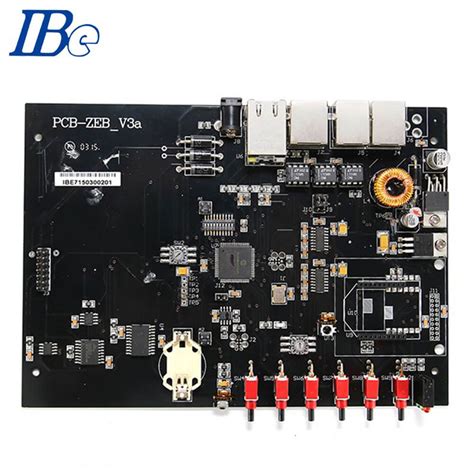
Durable PCB Connections for High-Stress Applications
In environments where mechanical stress, thermal cycling, or vibration are constant challenges, PCB assembly methods must prioritize structural integrity. Through-hole technology (THT) excels in such scenarios by creating robust physical bonds between components and the board. Unlike surface-mount devices (SMDs), through-hole pins extend through the substrate, forming durable connections resistant to shear forces and thermal expansion. This makes through-hole PCBA particularly suitable for aerospace, heavy machinery, and military systems, where failure is not an option.
Advanced PCB assembly services employ precision wave soldering or selective soldering techniques to ensure uniform filler penetration in plated through-holes. These processes minimize voids and cracks, enhancing joint longevity even under extreme temperatures. For critical applications, additional reinforcement—such as epoxy staking or conformal coating—is integrated into the PCBA workflow to protect against moisture, dust, and chemical exposure. By combining proven through-hole methods with modern quality controls, manufacturers deliver boards capable of maintaining electrical stability over decades of operation.
When designing for high-stress conditions, engineers must balance component placement, solder joint geometry, and material selection. Through-hole’s inherent mechanical advantage supports this balance, making it a cornerstone of reliable PCB assembly strategies where resilience trumps miniaturization.

Through-Hole vs. SMT: When Robustness Matters Most
In PCB assembly processes, the choice between through-hole technology (THT) and surface-mount technology (SMT) hinges on the operational demands of the final product. While SMT dominates modern electronics for its compact footprint and cost efficiency in high-volume production, through-hole PCBA remains irreplaceable in applications where mechanical resilience is non-negotiable. Components secured via through-hole soldering create physical bonds through the board’s plated holes, offering superior resistance to shear stress, thermal cycling, and vibration—common challenges in automotive, aerospace, and industrial systems.
For instance, connectors, transformers, and high-power components in PCB assembly often rely on through-hole mounting to maintain electrical integrity under extreme conditions. In contrast, SMT components, though space-efficient, may face solder joint fatigue in high-stress environments due to their reliance on surface-level adhesion. Engineers prioritizing long-term reliability over miniaturization frequently opt for hybrid approaches, combining THT for critical connections and SMT for secondary circuits. This strategic balance ensures that PCBA designs meet both performance benchmarks and durability requirements without compromising functionality.
Transitioning between technologies requires careful analysis of environmental factors, lifecycle expectations, and maintenance needs—a decision-making framework that underscores the enduring relevance of through-hole methods in mission-critical applications.
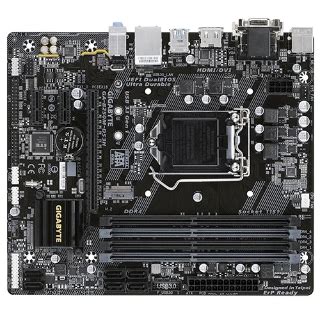
Optimizing PCB Longevity in Critical Systems
Achieving extended operational life in mission-critical systems demands meticulous attention to PCB assembly design and manufacturing practices. For applications such as aerospace, medical devices, or industrial automation, through-hole PCBA provides inherent advantages in mechanical stability and resistance to thermal stress. By leveraging high-temperature substrates, such as FR-4 with Tg170+, and precision-plated through-holes, manufacturers ensure robust interlayer connections that withstand decades of use.
Advanced PCB assembly workflows integrate automated soldering systems to maintain consistent fillet geometry, minimizing voids and cold joints—common failure points in harsh environments. Additionally, selective conformal coatings and potting compounds enhance protection against moisture, vibration, and chemical exposure. For instance, automated optical inspection (AOI) systems validate solder joint integrity, aligning with IPC-A-610 Class 3 standards for high-reliability applications.
Thermal management strategies, such as copper pour configurations and heatsink integration, further mitigate degradation risks in power-dense circuits. By combining controlled impedance routing with through-hole component anchoring, engineers optimize signal integrity while reducing mechanical fatigue. These practices ensure that PCBA solutions meet the rigorous demands of industries where system failure is not an option.
Cost-Effective Solutions for High-Reliability Assembly
Achieving high-reliability assembly in demanding applications requires balancing durability with budget considerations. Modern PCB assembly providers leverage optimized workflows and material selection to reduce costs without compromising performance. For high-stress environments like industrial machinery or automotive systems, through-hole PCBA offers mechanical stability that surface-mount technology (SMT) cannot match, particularly for components subject to vibration or thermal cycling. By combining automated insertion machines with precision soldering techniques, manufacturers minimize labor costs while ensuring consistent joint integrity.
Strategic design choices further enhance affordability—for example, standardizing component footprints or using lead-free solder alloys that meet regulatory requirements while extending product lifespans. Bulk purchasing of through-hole connectors and sockets also lowers per-unit expenses. Advanced testing protocols, such as automated optical inspection (AOI) and in-circuit testing (ICT), identify potential defects early, reducing rework costs. This approach ensures PCBA solutions meet stringent reliability standards for mission-critical systems while maintaining competitive pricing. Transitioning to scalable production models allows suppliers to accommodate both low-volume prototyping and high-volume runs, making through-hole PCB assembly a versatile option for cost-sensitive, high-performance applications.
Best Practices for Through-Hole Soldering Quality
Maintaining consistent soldering quality in PCB assembly requires adherence to proven methodologies tailored for through-hole components. Thermal management remains critical—preheating boards to 100–150°C minimizes thermal shock during soldering, reducing stress on components and substrates. For PCBA applications in high-vibration environments, such as automotive or industrial systems, using lead-free solder alloys (e.g., SAC305) ensures compliance with RoHS standards while maintaining joint integrity.
Optimizing solder fillet geometry is equally vital. A concave meniscus shape, achieved through precise control of solder temperature (240–260°C) and dwell time, guarantees robust electrical and mechanical bonds. Automated wave soldering systems excel here, particularly for high-volume production, but manual rework stations remain indispensable for prototyping or complex multi-layer boards.
Quality assurance protocols should integrate automated optical inspection (AOI) to detect insufficient wetting or cold joints, complemented by cross-sectional testing for mission-critical assemblies. Additionally, applying conformal coatings post-soldering enhances moisture resistance, extending PCB assembly longevity in harsh operating conditions. Training technicians in IPC-A-610 and J-STD-001 standards further ensures repeatable outcomes, aligning PCBA workflows with industry benchmarks for reliability.
Conclusion
In modern electronics manufacturing, through-hole PCB assembly remains indispensable for applications demanding exceptional mechanical stability and long-term reliability. While surface-mount technology (SMT) dominates high-density designs, PCBA solutions utilizing through-hole components excel in environments subject to vibration, thermal cycling, or mechanical stress – from industrial motor controls to aerospace instrumentation. The inherent strength of plated through-holes creates enduring solder joints, particularly crucial for connectors, transformers, and high-power components. Manufacturers seeking optimal durability should prioritize certified PCB assembly partners with proven expertise in mil-spec soldering processes and rigorous quality testing protocols. As industries continue pushing operational boundaries, combining through-hole’s physical robustness with advanced PCBA materials ensures electronic systems meet evolving reliability requirements across their service life.
FAQs
What distinguishes through-hole PCB assembly from surface-mount technology (SMT)?
Through-hole PCBA involves inserting component leads into drilled holes on the board, creating stronger mechanical bonds. This method is preferred for applications demanding high shock resistance or extreme temperature stability, such as automotive systems or industrial controls.
How does PCB assembly ensure durability in harsh environments?
Specialized soldering techniques, like wave soldering, combined with conformal coatings, protect through-hole components from moisture, vibration, and chemical exposure. These steps are critical for PCBA used in aerospace or marine equipment.
Are through-hole components more expensive than SMT in PCB assembly?
While through-hole PCBA often incurs higher labor costs due to manual insertion, it reduces long-term repair expenses in high-reliability systems. The trade-off favors durability over initial savings for mission-critical applications.
What testing methods validate through-hole PCB assembly quality?
Automated optical inspection (AOI) and in-circuit testing (ICT) are commonly used. For high-stress environments, thermal cycling and vibration tests simulate real-world conditions to ensure solder joint integrity.
Can through-hole and SMT coexist in a single PCBA design?
Yes. Hybrid designs leverage through-hole for power components or connectors requiring robustness, while SMT optimizes space for dense circuitry. This approach balances reliability and miniaturization.
Explore Custom Through-Hole PCB Assembly Solutions
For tailored PCB assembly services that prioritize long-term reliability, please click here: https://www.andwinpcb.com/pcb-assembly/. Our expertise ensures precision PCBA for industries where failure is not an option.



